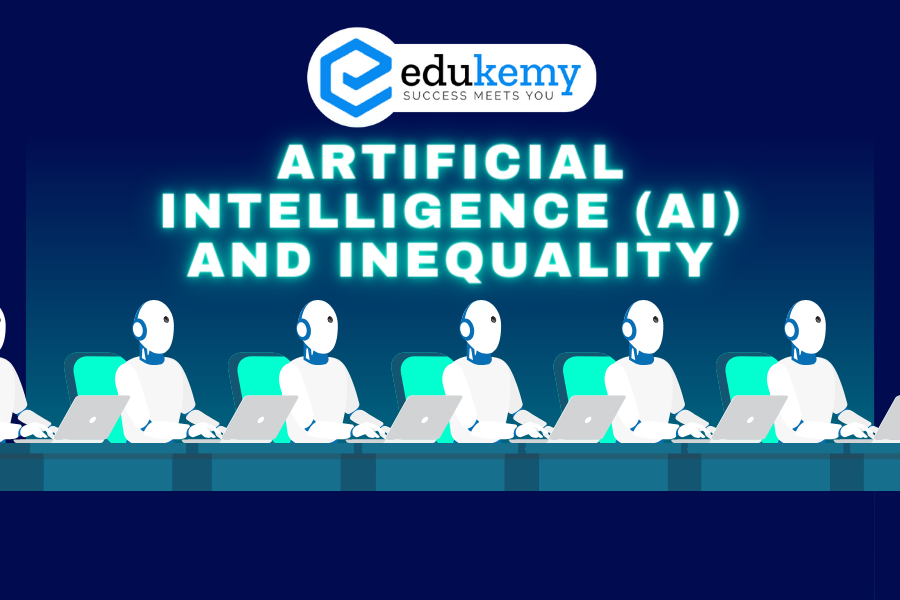
While contemporary technology, including Artificial Intelligence (AI), has generated substantial wealth and prosperity, concerns have arisen about the potential inequities associated with this growth. The current trend of exclusionary economic growth is feared to be exacerbated by the widespread adoption of AI and automation, impacting inequality in the following ways:
Contents
1. Labour Displacement:
- The implementation of AI and automation is anticipated to result in significant displacement of labor. Jobs traditionally performed by humans may be replaced by machines, leading to unemployment and potential economic hardship for affected individuals.
2. Automation’s Impact on Income and Wealth Inequality:
- The widespread adoption of automation, powered by AI, has the potential to impact income and wealth distribution. As machines take over certain jobs, there is a risk of exacerbating existing inequalities, with the wealthiest benefiting the most from increased productivity.
3. Polarization of Job Creation:
- The pattern of job creation associated with AI tends to be polarized. On one end, there is a growth in low-paying jobs that involve tasks not easily automated. On the other end, high-paying jobs related to AI development and maintenance are created. However, middle-class jobs may be disproportionately affected by job destruction, leading to a potential hollowing out of the middle-class workforce.
4. Potential Economic Polarization:
- If the integration of AI is not managed carefully, there is a risk of further polarizing the economic system. The concentration of economic benefits in certain sectors and among specific groups could intensify, widening the gap between the affluent and the economically disadvantaged.
5. Need for Thoughtful Implementation:
- The potential negative impacts of AI on inequality underscore the importance of thoughtful and well-managed implementation. Policies and strategies need to be in place to ensure that the benefits of AI are distributed more equitably, minimizing the risk of heightened economic disparities.
In conclusion, while AI presents significant opportunities for innovation and economic growth, careful consideration must be given to its societal impacts. To prevent an intensification of inequality, there is a need for proactive measures to address labor displacement, promote inclusive job creation, and ensure that the benefits of AI are shared across society.
FAQs
1. How does AI contribute to inequality?
- AI can exacerbate inequality by perpetuating biases present in the data used for training algorithms. If the data reflects societal inequalities, AI systems can inadvertently reinforce them, leading to biased outcomes in areas like hiring, lending, and criminal justice.
2. Can AI worsen economic inequality?
- Yes, AI has the potential to widen economic disparities. Automation driven by AI technologies can lead to job displacement, particularly for low-skilled workers, while simultaneously creating new opportunities that often require advanced technical skills, thus deepening the divide between those with access to education and resources and those without.
3. How does AI affect access to essential services?
- AI-powered services, such as healthcare diagnostics and personalized education platforms, may offer significant benefits. However, unequal access to technology and resources means that those in underserved communities may not benefit from these advancements, widening the gap in access to essential services and exacerbating existing disparities in healthcare and education.
4. Is AI exacerbating discrimination and bias?
- Yes, AI systems can perpetuate discrimination and bias if not designed and implemented carefully. Biases present in training data, as well as in the design and programming of algorithms, can lead to discriminatory outcomes, such as unequal treatment in hiring decisions or the targeting of certain demographics by law enforcement algorithms.
5. What measures can be taken to mitigate AI-driven inequality?
- Implementing diverse and inclusive teams in AI development can help identify and mitigate biases in algorithms and systems. Additionally, transparency in AI processes, including data collection and algorithmic decision-making, can enable scrutiny and accountability. Policies that promote equitable access to education and technology, along with regulations addressing algorithmic fairness and accountability, are also crucial steps in mitigating AI-driven inequality.
In case you still have your doubts, contact us on 9811333901.
For UPSC Prelims Resources, Click here
For Daily Updates and Study Material:
Join our Telegram Channel – Edukemy for IAS
- 1. Learn through Videos – here
- 2. Be Exam Ready by Practicing Daily MCQs – here
- 3. Daily Newsletter – Get all your Current Affairs Covered – here
- 4. Mains Answer Writing Practice – here

